Why Making Meaning Matters for Student Ownership
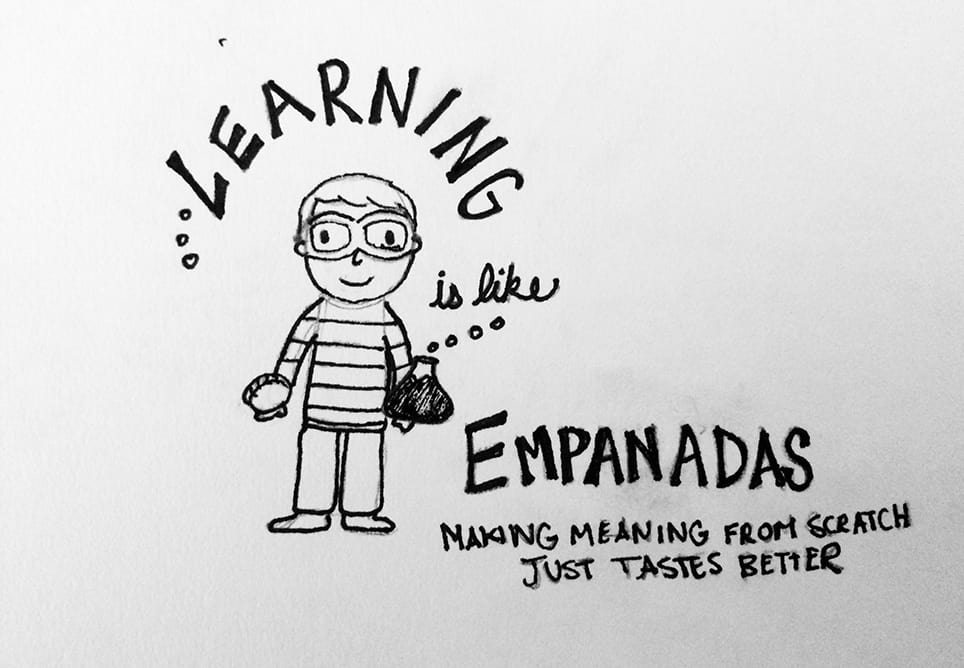
This weekend I decided to make empanadas. I looked to my Chilean cookbook for inspiration, but ultimately determined lard, hard boiled eggs, and raisins did not belong in my version. So, I started to play. I peeked inside the refrigerator to see what ingredients might work, scanned the pantry for additional items with complementary flavors and began mixing, chopping, measuring.
At some point during my experiment, as I was standing there making the empanada dough from scratch, rolling it out, kneading it, and forming it into a meal, I felt this sense of pride and satisfaction settle in over me. I wasn’t just a consumer; I became a creator. I didn’t just heat up a Hot Pocket, I made one. And it felt good.
Learning From Scratch
I think kids feel the same way. Our students learn best when they make the meaning, when they begin to own the learning. When students start to control things like pace, product, even the content, they make more meaning from scratch.
We are simply settling for a shadow of what learning can be when we, as teachers, provide answers too soon and grant little time for students to wonder and make.
Our students need us to stop taking over, grabbing the mouse, the iPad, the pencil, or the paintbrush to show them how it’s done.
Our students need time to think, explore, and be puzzled–time to not know on their journey to knowing. Time to struggle and experiment and test hypotheses.
Our students need to know we, as their teachers, value thoughtful questions over answers.
Shadow of Learning
As a teacher of both teachers and administrators I do not want to settle for a shadow of learning. I want the real deal. I don’t want lip service or right answers, I want to push my students to think, debate, discover connections and make their own meaning around the topics we are exploring. My students will work and create and struggle in their pursuit of meaning. And if learning is like empanadas, my hope is that my students will get that deep satisfaction and sense of pride as they learn.
Here are Five Ideas To Encourage Student Ownership in the Learning Process
1. Let Questions Be King
Model your belief that asking a question isn’t a sign of weakness or intellectual inferiority, but exactly the opposite by doing so yourself. Ask questions you do not necessarily know the answer to. For example, ask your students genuine questions about how school might be changed to better fit their needs. Show your students their opinion matters by reflecting together on the information gathered and putting it into action.
Our response, as teachers, to student questions can also nurture or stifle class inquisitiveness and involvement. Encourage curiosity and questions from your students by sharing Carol Dweck’s perspective of the unknown or the unmastered skills and topics simply as not yets… instead of can’ts. Where in the world are students supposed to ask questions if not in classrooms? I know we, as teachers, always say there are no stupid questions–but what do our eyes say when the seemingly obvious question comes up…again?
2. Put Students in Charge
Educators and parents agree our students need more real life, authentic learning opportunities. Instead of using all our brainpower to make up, seemingly realistic problems to solve, why not use ones that actually exist, in our schools, in our communities, in the world?
our bus is coming… pic.twitter.com/wMhDBGWJNM
— Shayla Grijalva (@ShaylaGrijalva) July 14, 2015
Library bus arrives in Guatemala! Global kids united for social good @the_wonderment https://t.co/reK9UkGGuK https://t.co/Uxa1EAWomo — Kristie Obrecht (@kristieobrecht) August 12, 2015
The Wonderment is a platform developed to make this type of meaningful student involvement and creativity in social good possible and accessible. Students connect to a global audience where they can explore and share creative solutions to real problems–like the Library Bus that students dreamed up to increase access to books and learning materials for children in Guatemala.
Check out the Wonderguides here for more information on how to incorporate these “plug-and-play” projects into your classroom or library and let your students lead the way, solving real problems with real impact.
3. Change Your Space
Think about the last time you felt creative, productive, motivated, or deeply thoughtful. What did the space look like, feel like? Does the space you work and think in make a difference for you? Let your students work with you to create a space that encourages the type of learning experiences you both hope for.
In addition to straight up asking your students to help design your space, channel a Maria Montessori like spirit, meticulously observing the details surrounding the space and moments in which your students appear to drive their own learning. Want to encourage reading for pleasure? Observe things such as: Where do my students gravitate to read? What positions do they like to read in? Do they like to be alone or sitting near others? Do extras, like snacks and drinks or pillows and stuffed animals (for the wee-ones) add to an enjoyable experience?
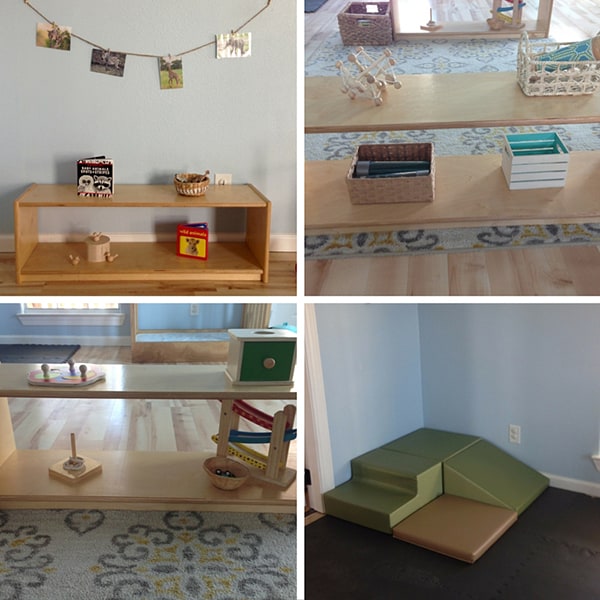
Whether you agree with the Montessori approach or not, it is hard to argue with the intentionality with which learning spaces are designed and organized. Intentionality, not a specific design or method is the point here. Since independence and choice are highly lauded in the Montessori mindset, learning materials are accessible and customized for student needs and developmental stages.
4. Explore Blended Possibilities
Innovative educators are constantly exploring new ways to leverage technology to personalize instruction for their students. However, it can be challenging to get beyond the buzzwords so prevalent in this conversation and the “technology-rich” classrooms most of us are probably familiar with; classrooms in which lots of technology is present, but little change occurs in the way instruction is both designed and delivered.
In the book, Blended, Heather Staker and Michael B. Horn outline a variety of strategies and methods for designing and implementing student-centered learning opportunities. Their very definition of blended learning which includes the specification that students have some element of “control over time, place, path, and/or [the] pace” of learning reflects the imperative role of student ownership to an authentic and, they would argue, successful, blended approach.
This “field guide” for blended learning is a powerful resource for educators seeking to leverage technology and learning design in order to personalize instruction and an effective place to start when considering going “blended”.
5. Model Your Own Pursuit of Meaning
There is danger in perceived“expertism”. Similar to the way the rugged entrepreneur who found success seemingly overnight is idolized in society, we, as educators, conveniently fail to focus on the work, the effort, the hours of study and experimentation that led us to the stuff we know today and the fact we are still learning. We, like most humans, would prefer to have it all together of course. Students should see us, as their educators, reading, researching, even struggling to figure things out on a regular basis. Sounds pretty scary even as I write it, but I really believe that. If a key part of learning is the struggle, the work that goes in before we know things, shouldn’t students see that we go through that process too?
If you are afraid of the words that may come out of your mouth mid struggle, consider using blogging as a form of reflection on your learning. There you can at least make some edits to control your tongue and tone. Fellow Getting Smart Teacher blogger Susan Lucille Davis shared the skills that matter when it comes to blogging.
Don’t let fear stand in the way.
Many educators returning from conferences will share what they learned with their peers, but what about their students?
Let students put you in the hot seat when you return from a learning experience:
- What did you learn?
- What puzzles or wonderings do you still have?
- What made you think in a new way?
- What do you hope to implement in the classroom as a result?
This stuff (the things we learn and experiences we have) directly affects students right? So, why not openly share what we are trying to do with the people we are trying to do it with? As teachers, we may be surprised at the response we receive from our students when we share our new strategies and instructional methods saying things like, “I have been learning a lot about blended learning models and would like to try a station rotation model during our math block. This is what I am thinking it will look like… What do you think?”
I know several of my eduvoxer friends let students hear relevant portions of the conversation (always ask for permission sometimes what happens on voxer is supposed to stay on voxer).
Empanadas for All
So, what will be your empanada? What meaning will you make both in your own learning and in the opportunities you provide for your students?
Sidenote: Elated by my culinary feat, I wrote down the recipe that came about in #sketchipe form.
For more blogs by Tracy, check out:
- 8 Ways To Encourage Soft Skills (Core Dispositions) in our Children
- The Hard Road to Soft Skills: Leaving Room for Our Children To Fall
- The New Literacy Equation, Visual Literacy is Non-Negotiable
Stay in-the-know with all things EdTech and innovations in learning by signing up to receive the weekly Smart Update.



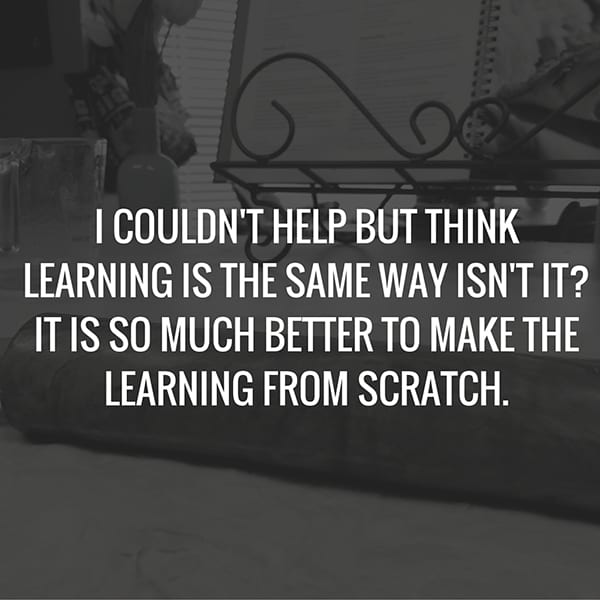
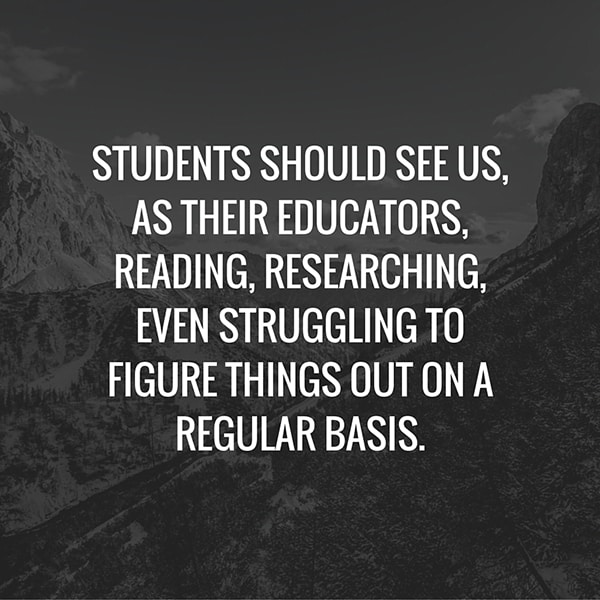
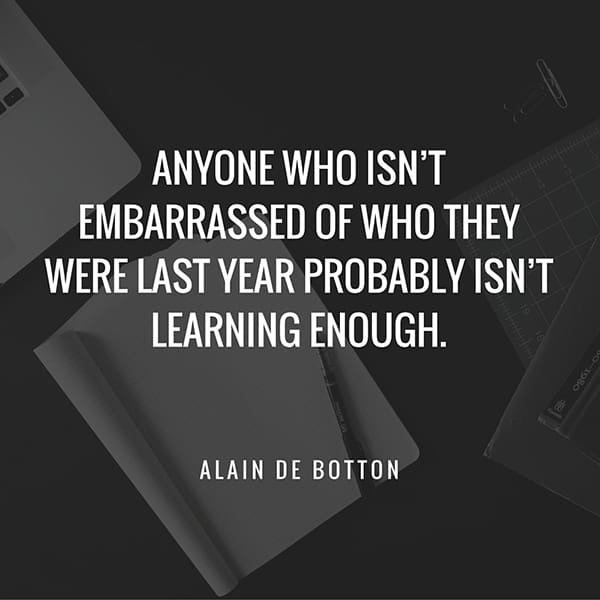



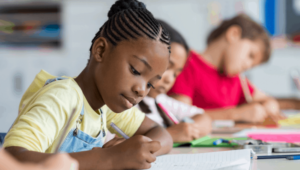

0 Comments
Leave a Comment
Your email address will not be published. All fields are required.